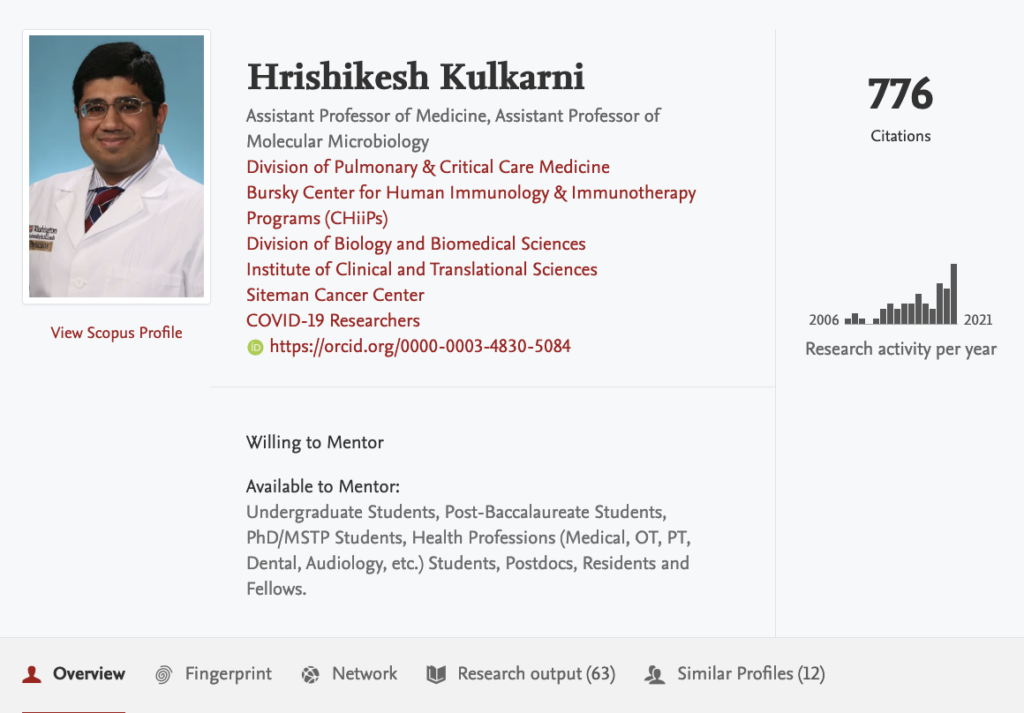
Faculty and organizational profile pages are comprised of three main areas of information, including the profile header, personal information and subpages.
Profile overview

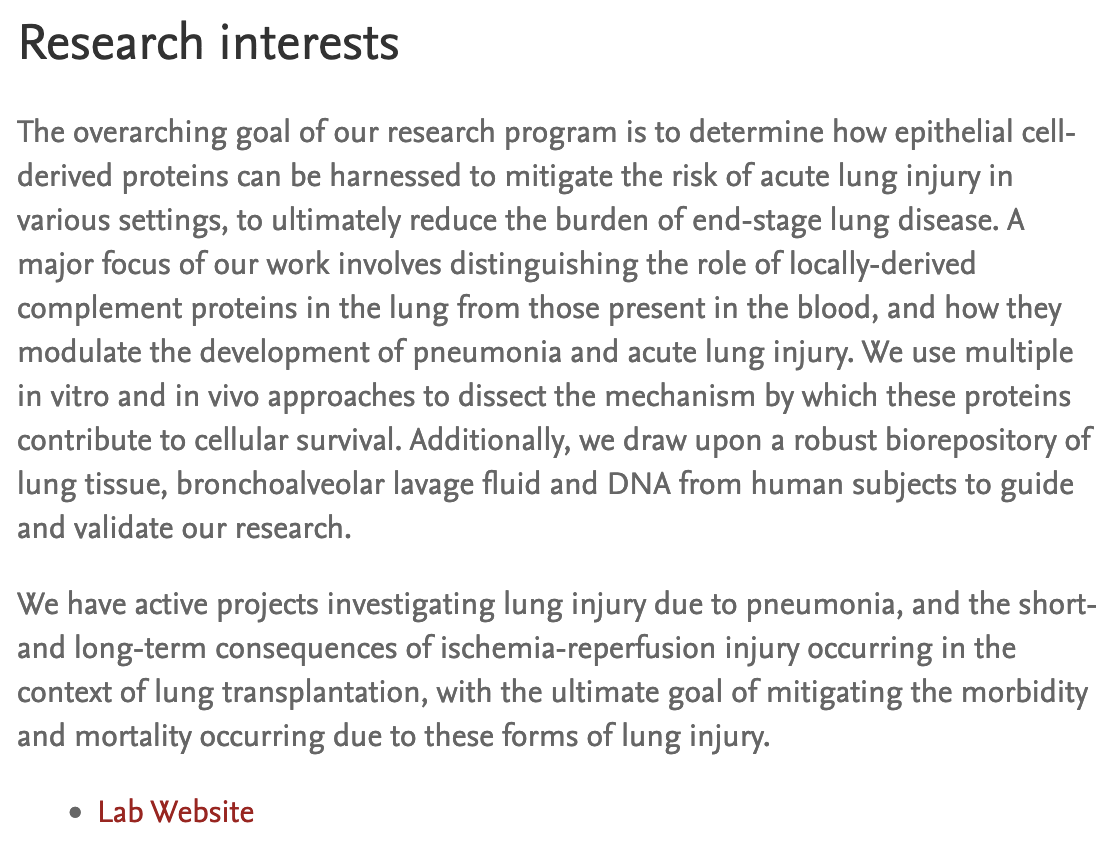
Use the Research interests statement to introduce the main components of your current and past research projects. Keywords, phrases, and topics from recent articles should be included in this section to increase traffic and to promote wider dissemination of new research findings.
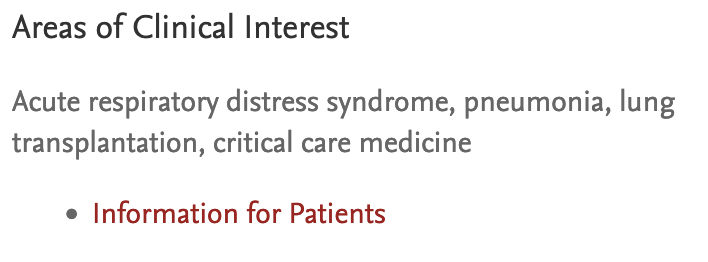
The Clinical interests statement is a great place to describe types of patients treated and healthcare services, conditions and treatments provided. For those providing care, include an “information for patients” link to direct prospective patients to the WU-Physicians page where they can find information about making an appointment. The Clinical interests statement should help non-researchers, patients, and students easily understand the “why” behind their research.
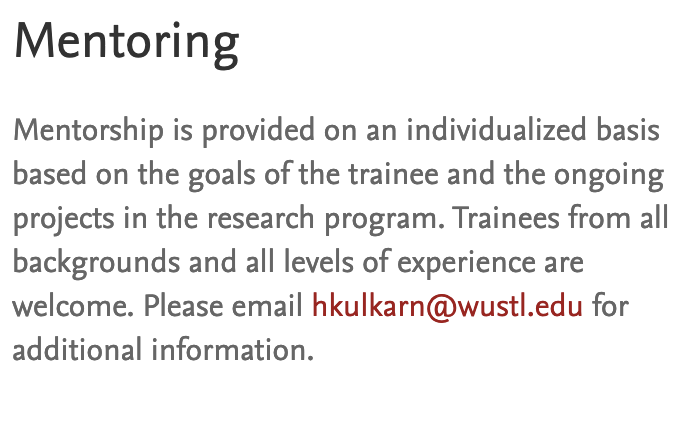
A Mentoring statement describes the faculty member’s current mentoring activities, experiences or projects they offer, as well as specific programs they are currently involved in. It serves as an introduction to prospective students, post-docs and individuals interested in pursuing a career in biomedical research.
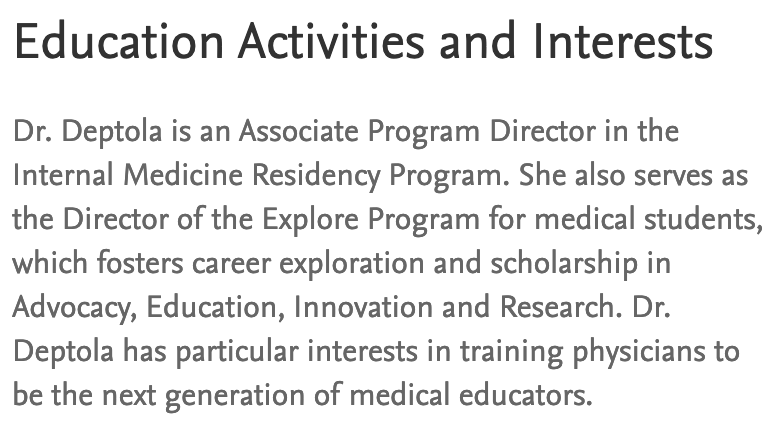
The Education activities and interests section describes a faculty member’s activities, interests and accomplishments as an educator. Designing a course, serving as a course master, directing post-graduate training programs, and other educational or professional interests can be provided in this section.
Fingerprint

A Fingerprint refers to an identified concept, extracted from a body of text analyzed by the Elsevier Fingerprint Engine. A Fingerprint visualization refers to the list of weighted concepts extracted from a source of text.
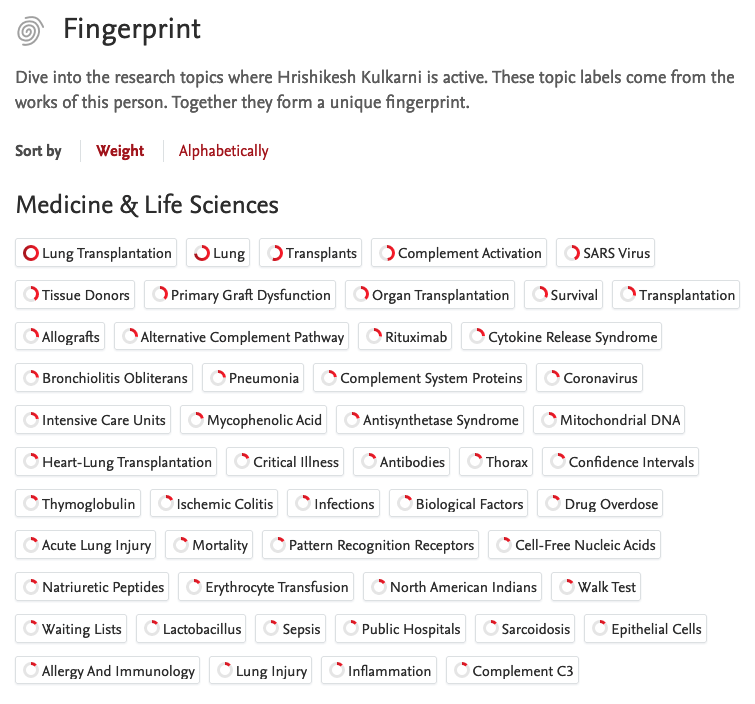
A fingerprint visualization can be generated from a single source of text or from several sources of text.
Click on a concept ring to see the researchers, departments and publications associated with a specific topic.
Network

The Network provides several interactive displays of partnerships between researchers and research groups worldwide.
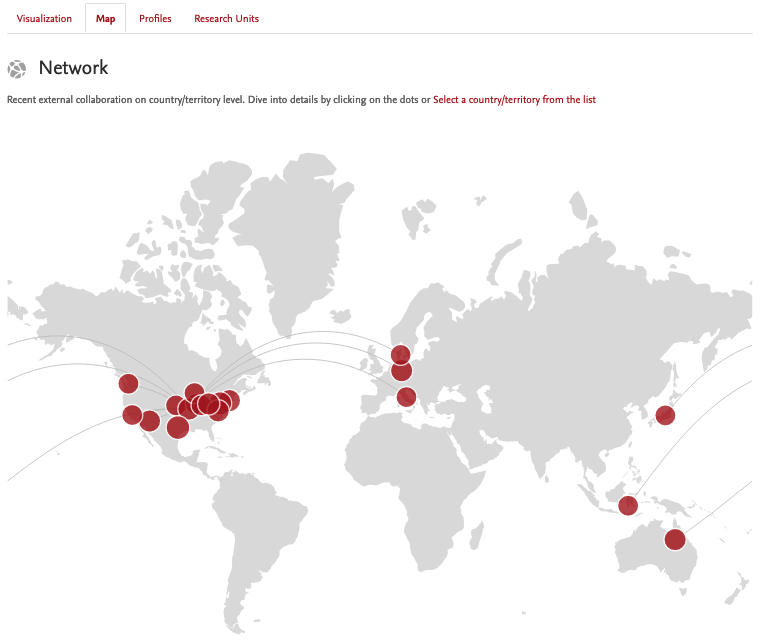
The Map or Network Map, provides a geographic display of collaborations between researchers at Washington University and countries and territories world-wide. Clicking on red dots in a particular region of the map will display additional details about the external collaborators on research outputs.
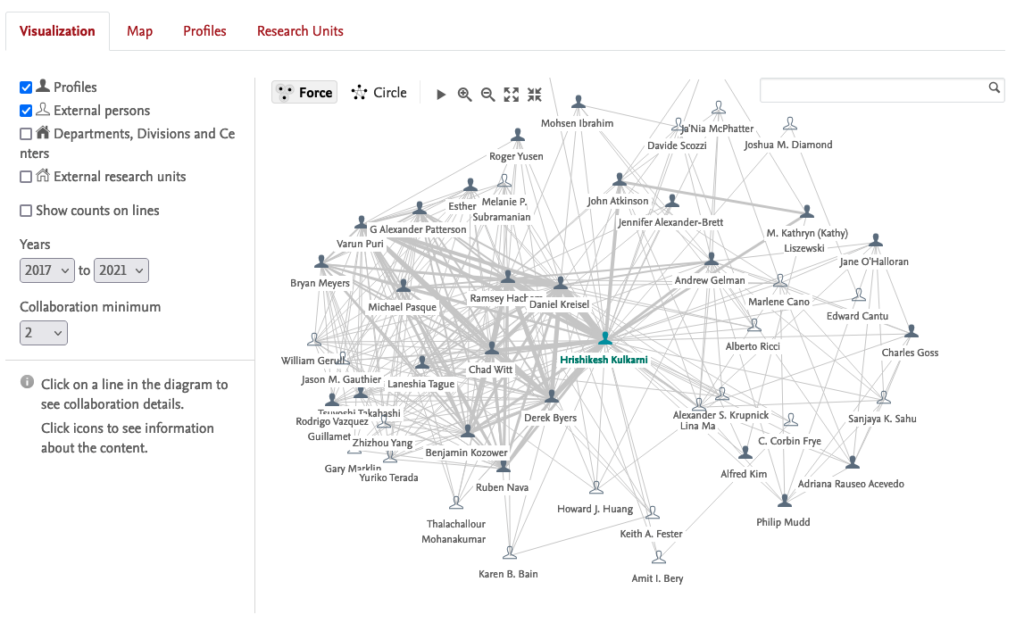
The Visualization or Network Visualization, provides information about collaborations with individuals and research groups within the university and external groups. Connections between researchers and the Research Outputs produced from those connections are interactive.
If you would like to see collaboration visualizations for a group of individuals not represented in Research Profiles, check out SciVal (WU network access only), or contact Becker Library for help.
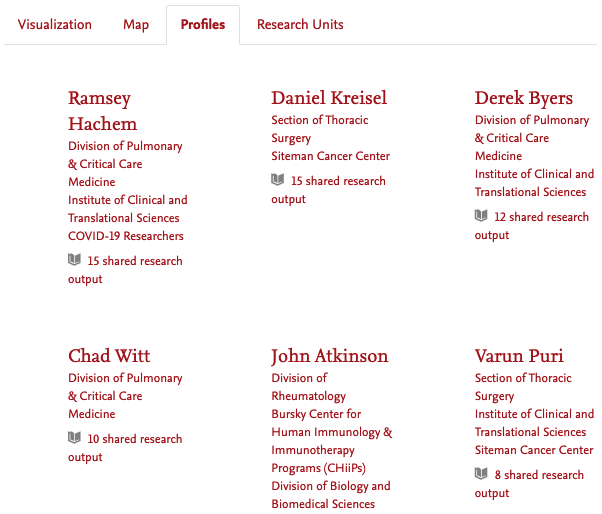
The Profiles or Network Profiles shows a list of individuals who have collaborated with the WUSTL faculty. Internal collaborators are shown at the top, followed by external researchers.
The number of research outputs associated with each connection are shown as well, and can be viewed in a list after clicking the shared research output count.

Similar to the Profiles section within the Network subpage, Research units shows organizational units and departments who have collaborated with Washington University faculty.
Research output

From a faculty profile or department profile, the research outputs section includes a list of all academic publications for the profile it is associated with.
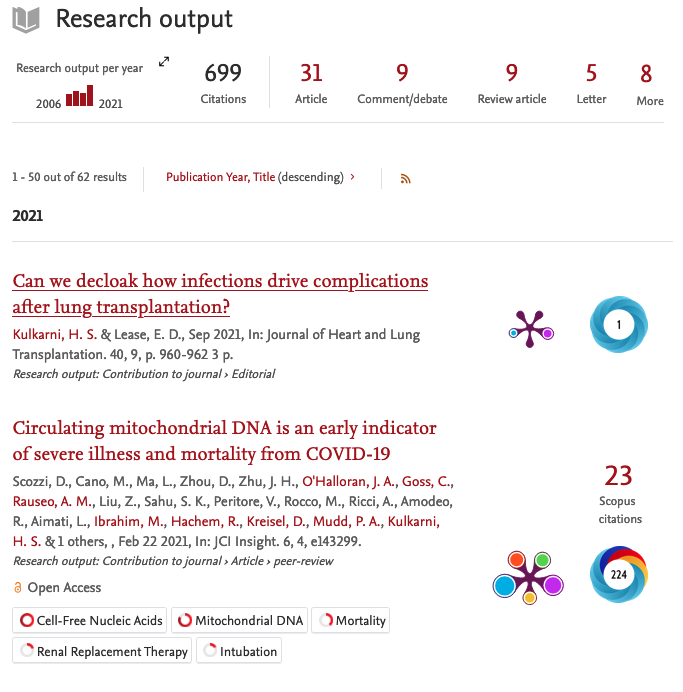
Research outputs are updated automatically using data imported from the Scopus Database. If you have materials indexed in Scopus, they will automatically appear in the Research output section of your profile.
Journal articles make up the majority of the content in Scopus, but additional materials like books, book chapters and conference proceedings from Scopus are also imported into Research Profiles.
Types of records found in Research Profiles include:
- Articles
- Review articles
- Comments/debates
- Letters
- Editorials
- Conference contributions
- Short surveys
- Conference articles
- Papers
- Forewords/postscripts
- Books
- Book Chapters
Each research output has a dedicated page. The Overview section includes citation information for the publication.
Internal authors and affiliated departments are hyperlinked, directing to a corresponding faculty or department profile.

The number of times an article has been cited updates automatically using data retrieved from Scopus.
Additional information about the impact of an article, including PlumX metrics and Altmetric attention scores, update automatically.
A Fingerprint visualization associated with the research output can be found on the Fingerprint section, or as a preview on the Overview section.
Similar Profiles

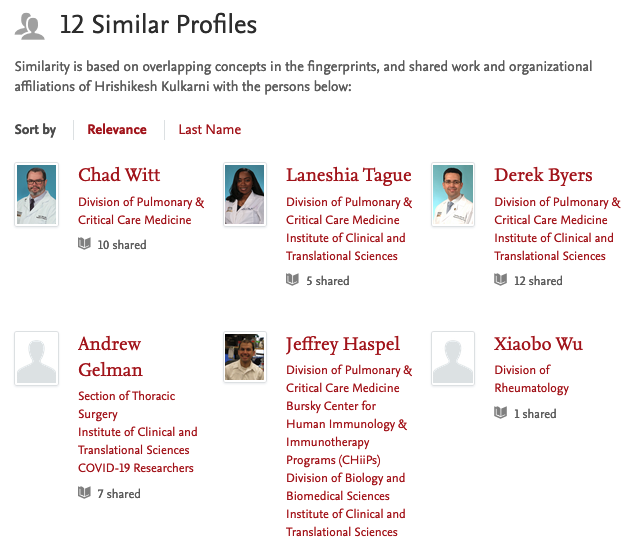
Profiles with similar and overlapping Fingerprint concepts, shared research outputs and overlapping organizational affiliations are shown in the Similar Profiles subpage.
